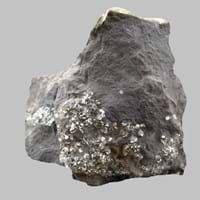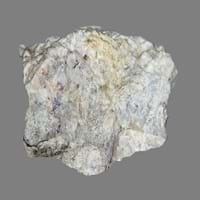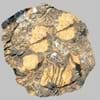Definition
Argillites are highly compact sedimentary or slightly metamorphosed rocks that consist largely or wholly of particles of clay or silt but lack the fissility of shale or the cleavage characteristic of slate
Skarns are formed during regional or contact metamorphism and from a variety of metasomatic processes involving fluids of magmatic, metamorphic, and/or marine origin
Origin
Unknown
USA, Australia
Discoverer
Unknown
Tornebohm
Etymology
From Latin Argilla (clay) and -ite in English which became agrilla+ -ite = Argillite
From an old Swedish mining term originally used to describe a type of silicate gangue or waste rock.
Class
Sedimentary Rocks
Metamorphic Rocks
Sub-Class
Durable Rock, Soft Rock
Durable Rock, Hard Rock
Group
Not Applicable
Not Applicable
Other Categories
Fine Grained Rock, Opaque Rock
Fine Grained Rock, Opaque Rock
Texture
Clastic, Polished
Earthy, Mud-rich, Rough
Color
Dark Grey to Black, Pink, Red, White
Black, Brown, Colourless, Green, Grey, White
Durability
Durable
Durable
Scratch Resistant
Yes
Yes
Appearance
Rough and Dull
Dull
Interior Uses
Decorative Aggregates, Homes, Interior Decoration
Decorative Aggregates, Entryways, Interior Decoration
Exterior Uses
As Building Stone, Garden Decoration, Office Buildings
As Building Stone, As Facing Stone, Garden Decoration, Paving Stone
Other Architectural Uses
Curbing, Whetstones
Curbing
Construction Industry
Used for flooring, stair treads, borders and window sills.
As a Flux in the Production of Steel and Pig Iron, As a Sintering Agent in Steel Industry to process Iron Ore, As Dimension Stone, Gold and Silver production, Manufacture of Magnesium and Dolomite Refractories
Medical Industry
Not Yet Used
Not Applicable
Antiquity Uses
Artifacts, Monuments, Sculpture
Artifacts, Monuments, Sculpture
Commercial Uses
Fire resistant, Used to manufracture paperweights and bookends
Creating Artwork, Gemstone, Jewelry, Metallurgical Flux, Source of Magnesia (MgO)
Types
Not Available
Endoskarns
Features
Is one of the oldest rock
Host Rock for Lead, Zinc and Copper Deposits
Archaeological Significance
Famous Monuments
Data Not Available
Data Not Available
Famous Sculptures
Data Not Available
Data Not Available
Pictographs
Used
Not Used
Petroglyphs
Used
Not Used
Formation
An argillite is a fine-grained sedimentary rock mainly composed of clay particles which forms from lithified muds which contain variable amounts of silt-sized particles.
Due to change in environmental conditions, rocks are heated and pressurized deep inside the Earth's surface. Skarn is formed from the extreme heat caused by magma or by the intense collisions and friction of tectonic plates.
Mineral Content
Biotite, Chlorite, Feldspar, Micas, Muscovite or Illite, Plagioclase, Pyrite, Quartz
Calcite, Enstatite, Epidote, Garnet, Magnetite, Pyroxene, Titanite
Compound Content
Iron(III) Oxide, Potassium Oxide, MgO, Silicon Dioxide
Au, CaO, Carbon Dioxide, Cu, Fe, MgO
Types of Metamorphism
Not Applicable
Burial Metamorphism, Cataclastic Metamorphism, Contact Metamorphism, Hydrothermal Metamorphism, Impact Metamorphism, Regional Metamorphism
Types of Weathering
Biological Weathering
Not Applicable
Types of Erosion
Chemical Erosion
Not Applicable
Grain Size
Fine Grained
Fine Grained
Fracture
Conchoidal to Uneven
Irregular
Streak
White to Grey
Light to dark brown
Porosity
Highly Porous
Less Porous
Luster
Waxy and Dull
Waxy and Dull
Specific Gravity
2.56-2.68
2.86
Transparency
Opaque
Opaque
Density
2.54-2.66 g/cm3
2.8-2.9 g/cm3
Resistance
Heat Resistant, Impact Resistant
Heat Resistant
Deposits in Eastern Continents
Asia
Bangladesh, China, India, Russia
China, India, Russia, Saudi Arabia, South Korea, Sri Lanka
Africa
Ethiopia, Kenya, Morocco, South Africa, Tanzania
South Africa, Western Africa
Europe
Austria, France, Germany, Greece, Italy, Romania, Scotland, Spain, Switzerland
United Kingdom
Others
Not Yet Found
Not Yet Found
Deposits in Western Continents
South America
Bolivia, Chile, Colombia, Ecuador, Peru, Venezuela
Brazil, Colombia, Paraguay
Deposits in Oceania Continent
Australia
New South Wales, New Zealand, Queensland, Victoria, Western Australia
Central Australia, Western Australia
All about Argillite and Skarn Properties
Know all about Argillite and Skarn properties here. All properties of rocks are important as they define the type of rock and its application. Argillite belongs to Sedimentary Rocks while Skarn belongs to Metamorphic Rocks.Texture of Argillite is Clastic, Polished whereas that of Skarn is Earthy, Mud-rich, Rough. Argillite appears Rough and Dull and Skarn appears Dull. The luster of Argillite and Skarn is waxy and dull. Argillite is available in dark grey to black, pink, red, white colors whereas Skarn is available in black, brown, colourless, green, grey, white colors. The commercial uses of Argillite are fire resistant, used to manufracture paperweights and bookends and that of Skarn are creating artwork, gemstone, jewelry, metallurgical flux, source of magnesia (mgo).










